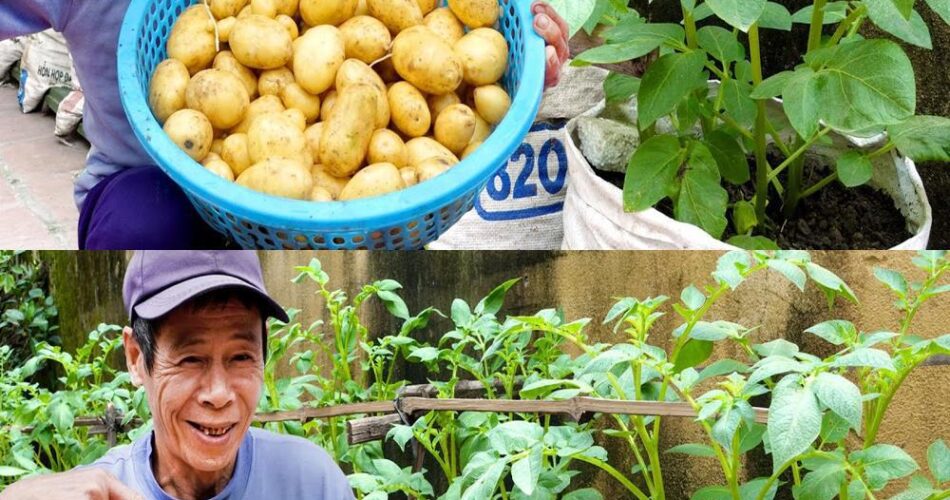Potato cultivation at home: a child’s play for a surprising harvest!
Growing potatoes at home can be a rewarding and rewarding experience. In addition to having a fresh and organic supply of this versatile vegetable, this can be an excellent way to introduce children to the joys of gardening and to raise their awareness of nature.
Choice of potato varieties
Before you start planting your potatoes, it is important to choose the right varieties according to your preferences and growing conditions. The most popular varieties are “Ratte”, “Charlotte” and “Belle de Fontenay” for early potatoes, while “Bintje” and “Nicola” are recommended for ware potatoes.
Soil preparation and planting
Prepare a loose soil, rich in organic matter and well drained to promote tuber growth. Potatoes prefer slightly acidic soils with pH between 5.5 and 6.5.
- Draw furrows 10-15 cm deep and spaced about 30 cm apart.
- Place germinated potato tubers at 30 cm intervals and cover with soil.
- Water generously after planting to ensure good hydration.
Maintenance and care of seed potatoes
Keep the soil moist but not wet throughout the growing season. Regular cutting of plants by adding soil around stems to promote tuber formation and protect them from light.
- Eliminate weeds to avoid nutrient competition.
- Straw plants to maintain moisture and limit weed growth.
- Monitor signs of diseases such as mildew and act quickly if necessary.
Harvest and storage of potatoes
Potatoes may be harvested between 90 and 120 days after planting, depending on the variety chosen. When the foliage starts to yellow and fade, it is the ideal time to harvest.
- Gently remove tubers from the soil, taking care not to damage them.
- Let the potatoes dry in the open air for a few days to harden their skin before storing them.
- Store potatoes in a cool, dark and well ventilated place to extend their shelf life.
By following these simple steps, you can enjoy an abundant harvest of potatoes grown at home. It is an excellent way to participate in the food chain and to better understand the process of growing the food we consume on a daily basis.
